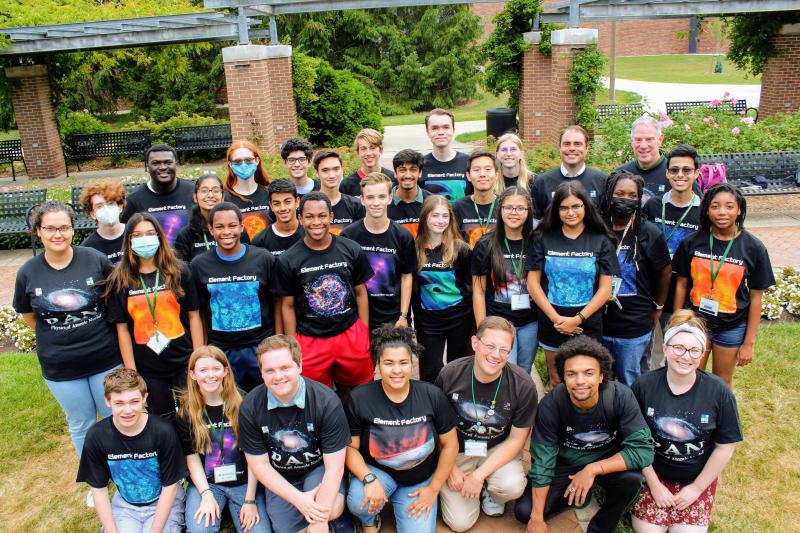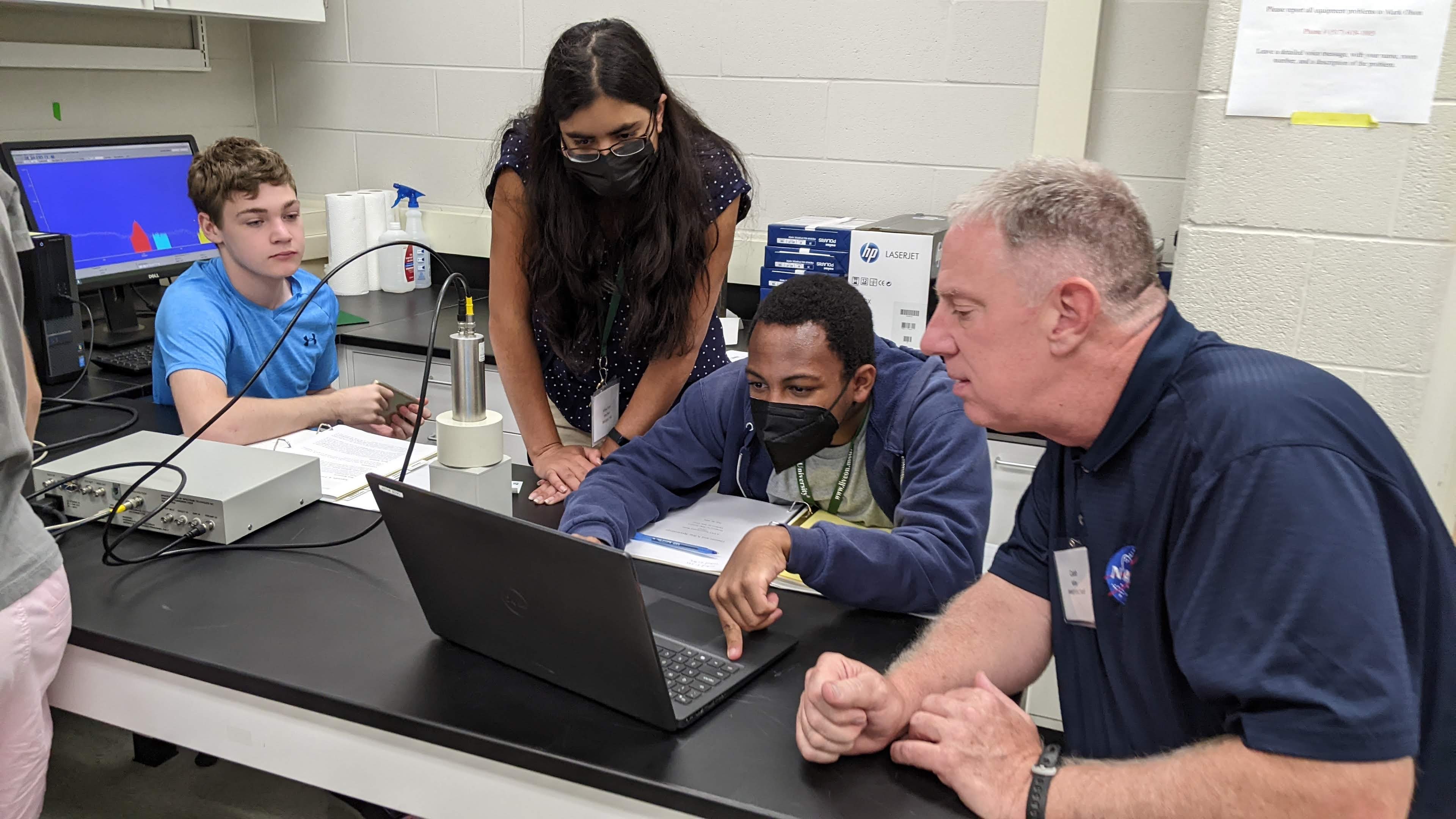Data
You will be redirected to cenamweb.org in 15 second(s). The JINA-CEE website is not updated anymore. The archived website can still be reached through the CeNAM website.
Annual Physics of Atomic Nuclei program held July 25-29

The 29th annual Physics of Atomic Nuclei (PAN) program ran July 25-29. This year’s program marked the return to in-person events after two years of PAN online. The goals were unchanged: to give motivated high-school students an authentic research experience while connecting them to current scientists and an inside view of academia.
Twenty-three high-school students attended this year’s PAN program, and 12 MSU students volunteered for various parts of the program. JINA drew more than 20 volunteers from the Facility for Rare Isotope Beams (FRIB) and MSU’s Department of Physics and Astronomy to create and share the program content: lectures, activities, and experiments. Lectures included an overview of radiation detection, an exploration of the matter/antimatter disparity in our universe, and the history of nuclei created since the Big Bang. Students created their own neutron capture process models, simulated nuclear fragmentation to create rare isotopes, explored the density of galaxies via images from the James Webb Space Telescope, and built a 3D model of the chart of nuclides with towers of LEGO bricks to represent the energy per particle for each isotope.
After conducting three capstone experiments at PAN 2022, student research teams reported on them at a poster session on the final afternoon.
- Creating the Isotopes: Using modeling code they could run on their own laptops, students could select any isotope and generate the energies, angular momenta, and spins associated with the motion of one proton or neutron in the presence of all other nucleons in that nucleus. The resulting level schemes and emergent patterns helped them understand stability, magic numbers, beta decay, the location of the proton and neutron drip lines, and the nuclear "spin." All of these are important for understanding the role that each isotope plays in astrophysics.
- Gamma Spectroscopy: Students learned to use sodium-iodide detectors to pick up and identify gamma rays from a variety of radioactive sources. They used known sources (cesium-137 and cobalt-60) to calibrate their detectors before attempting to identify an unknown source. They learned the importance of incorporating two or more points in their calibration as they searched for radioisotopes that could fit their data while simultaneously fitting in the university laboratory environment.
- Half-Life: Building on their spectroscopy experience, students were expected to recalibrate their detectors. After learning about the statistics of radiation and how to identify the half-life, the research teams were asked to create a plan for studying an AmBe neutron source and the presence of cadmium in silver coins. The teams proposed experiments and then measured the decays of radioactive (neutron-activated) silver-108 and silver-110 to establish their lifetimes.

PAN participants were housed in a residence hall with chaperones who were current MSU physics students. These volunteers, along with several other undergraduates and graduate students, mentored the students by sharing their experience in the field and the path that led them to it. Nearly half of those mentors were PAN alumni themselves!
Post-survey data indicates that PAN 2022 had a very similar impact as previous programs, whether they were in-person or online. Students commonly expressed these lessons learned:
- PAN improved their understanding of science careers and gave a positive impression of higher education
- They can belong in physics research
- They don’t have to follow a “conventional” career path
- For those who hadn’t considered physics and/or nuclear astrophysics for their college major and/or career, PAN increased their interest in that path
- For those who were previously interested in a physics career, PAN further inspired them to pursue their dream
Students, organizers, and volunteers were very pleased with the program. In the words of one student: “This pre-college program made me even more excited about attending college. It gave me huge insight on the ins and outs of the physics world of research and experiments. There were times where I felt discouraged because the topics we were learning about were very complex, but the faculty encouraged me. This program taught me that you can't be afraid to ask questions. I also discovered so many physics fields that I had never even thought of before.”
FRIB and JINA-CEE jointly organized and sponsored PAN 2022.
The Joint Institute for Nuclear Astrophysics - Center for the Evolution of the Elements (JINA-CEE) is a National Science Foundation Physics Frontiers Center that enables rapid communication and coordination across field boundaries and connects new research.
Michigan State University operates the Facility for Rare Isotope Beams (FRIB) as a user facility for the U.S. Department of Energy Office of Science (DOE-SC), supporting the mission of the DOE-SC Office of Nuclear Physics. Hosting what is designed to be the most powerful heavy-ion accelerator, FRIB enables scientists to make discoveries about the properties of rare isotopes in order to better understand the physics of nuclei, nuclear astrophysics, fundamental interactions, and applications for society, including in medicine, homeland security, and industry.
